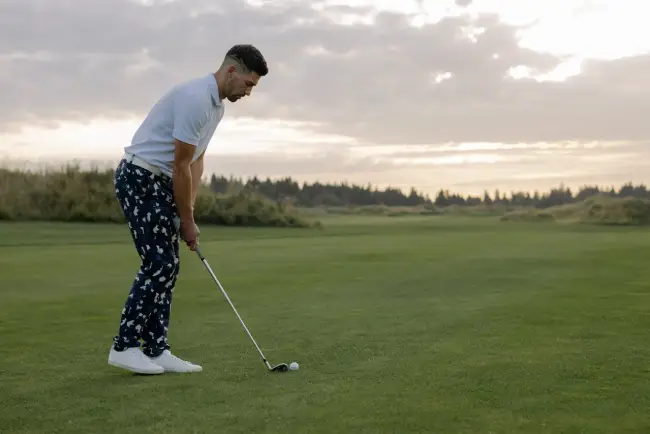Have you ever heard someone mention taking a Mulligan while playing golf and wondered what they were talking about? In this article, we will explore what Mulligans are, their rules, when they can be used, and how they can impact your game.
What are Mulligans in Golf
A Mulligan in golf refers to a do-over or a second chance to take a shot without incurring a penalty. It is essentially a free shot that allows a player to retake a stroke that did not produce a desirable outcome. While Mulligans are not recognized by the official rules of golf governed by organizations like the United States Golf Association (USGA) or the Royal and Ancient Golf Club of St Andrews (R&A), they are commonly used in casual or friendly rounds among recreational golfers.
When Can Mulligans Be Used?

Mulligans are typically used in more relaxed settings such as friendly games among friends or in charity golf events. They are not allowed in competitive play or tournaments governed by official rules. In social games, players may agree to allow each participant a set number of Mulligans per round to add an element of fun and reduce the pressure of a bad shot.
History of Mulligans in Golf
Origins of Mulligans
Legend has it that the term “Mulligan” originated in the 1930s at the Bel-Air Country Club in Los Angeles. David Mulligan, a prominent member of the club, often struggled with his opening tee shot. One day, after a particularly poor drive, Mulligan requested a do-over. His playing partners, amused by the request, granted him a second chance. From that day forward, the term “Mulligan” stuck, symbolizing a second opportunity to correct a mistake.
Evolution of the Mulligan Rule
Over time, the concept of the Mulligan evolved from an informal agreement among players to a recognized rule in casual golf games. While traditional golf rules do not officially recognize Mulligans, they have become widespread in friendly and charity matches. Players typically limit the use of Mulligans to one per round or designate specific holes where they are allowed.
Popularity and Controversies
Mulligans have gained popularity for their ability to add a fun and forgiving element to the game. They provide golfers of all skill levels the chance to recover from a poor shot and enjoy the game without the pressure of strict rules. However, Mulligans have also sparked debates among purists who argue that they undermine the integrity of the sport by allowing players to skirt the consequences of their mistakes.
Etiquette and Rules Regarding Mulligans
Mulligans in golf can be a fun way to give players a second chance at a shot they may have flubbed. However, it is essential to understand the etiquette and rules surrounding the use of mulligans to ensure fair play and maintain the integrity of the game.
Proper Usage of Mulligans
When it comes to mulligans, it is crucial to establish the ground rules before the round begins. Players should agree on the number of mulligans allowed per round to avoid any misunderstandings during the game. Additionally, mulligans are typically used off the first tee or at the beginning of a specific hole. Using a mulligan later in the hole or round may disrupt the flow of play and potentially give an unfair advantage.
Etiquette on Mulligans
While Mulligans can add a fun and light-hearted element to a casual round of golf, it is essential to observe proper etiquette when using them. Players should agree on the number of Mulligans allowed before starting the round to avoid misunderstandings. Additionally, it is good practice to limit Mulligans to tee shots or shots that do not significantly impact the overall score to maintain the integrity of the game
Mulligans in Different Formats
In casual rounds of golf, players often have the flexibility to use mulligans as they see fit. However, in more formal settings such as tournaments or competitive matches, the rules regarding mulligans may vary. Some events may strictly prohibit the use of mulligans to maintain a level playing field, while others may allow them under certain conditions.
Penalties for Improper Use
If a player uses a mulligan in violation of the agreed-upon rules or etiquette, there may be consequences. In friendly games, players may simply receive a gentle reminder to follow the guidelines set at the beginning of the round. In more competitive settings, penalties such as stroke additions or disqualification may be enforced for repeated or egregious misuse of mulligans.
Impact of Mulligans on Player Performance
Psychological Impact of Mulligans
One of the most significant impacts of Mulligans on player performance is the psychological aspect. Knowing that they have a second chance can alleviate the pressure on players and help them relax and focus better on their shots. This psychological boost can lead to improved confidence and potentially better performance throughout the round.
Strategic Use of Mulligans
Players often strategize the use of Mulligans based on their performance on specific holes. Some may choose to save their Mulligans for crucial shots where they are more likely to benefit from a second attempt, such as tee shots on challenging holes or critical putts. By strategically using Mulligans, players can enhance their overall performance and potentially lower their final score.
Impact on Score and Results
The use of Mulligans can significantly impact a player’s final score and results. By retaking shots that would have otherwise resulted in penalties or high scores, players can improve their overall performance on individual holes and the entire round. This can lead to a more enjoyable experience on the course and may encourage players to continue playing golf.
Developing Skills Through Mulligans
While some may argue that Mulligans take away from the traditional challenge of golf, others believe that Mulligans can help players develop and improve their skills. By analyzing their mistakes on initial shots and using Mulligans to correct them, players can learn from their errors and make adjustments to their gameplay. This process of trial and error can enhance a player’s overall performance and understanding of the game.
FAQS
Q: Can mulligans be used in tournaments?
A: Mulligans are not permitted in professional or official amateur tournaments. They are typically only used in casual play or during charity golf tournaments where they might be sold to raise money.
Q: When is a mulligan typically used?
A: Mulligans are usually used after a poor tee shot, as it’s often the shot that can most detrimentally affect a player’s game. However, some groups allow mulligans at any point during play.
Q: Are there any rules on how many mulligans a player can take?
A: In casual play, the number of mulligans allowed is typically agreed upon before the game begins. It can be one mulligan per nine holes, per round, or any other arrangement the players decide upon.
Q: Do mulligans count in a golf score?
A: In informal games where mulligans are allowed, the mulligan shot does not count as an additional stroke, which is why it’s considered a free shot. However, in any official or formal game, mulligans are not recognized, and every shot counts.
Q: How do mulligans affect the pace and spirit of the game?
A: While mulligans can help relieve the stress of a bad shot and make a round more enjoyable for casual players, overuse can slow down play. Players should be considerate of others on the course and use mulligans sparingly.







